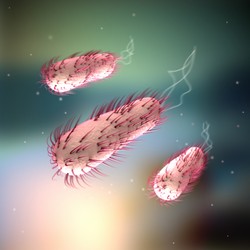Metal sensing in bacteria
Gene regulatory proteins have evolved metal coordination sites that ′sense′ specific metal ions and activate or inhibit DNA binding or transcription activity, This allows the proteins to control the expression of genes that mediate the micro-organisms response. To understand how the sensor senses a specific metal and thus initiate a biological response, EU-funded scientists have investigated the structural changes that occur in the protein from the correct or wrong metal ion, and the binding of the DNA. The EU-funded METAL ION SENSORS (Determination of the sensing and transcription mechanisms of bacterial metal sensors using pulsed EPR) project studied each small step in the metal-ion cycle to identify sources that can interrupt the copper homeostasis. Electron paramagnetic resonance spectroscopy (EPR) was used to explore the transcription and detection mechanisms of a class of proteins called metalloregulator proteins. These metal sensor proteins can identify a particular metal ion by forming a specific coordination complex. METAL ION SENSORS has focused on the CueR copper metalloregulator protein, which is found in the pathogenic bacteria Escherichia coli and inhibits DNA binding upon metal binding. In addition, researchers successfully identified the factors responsible for controlling the Cu(I) efflux mechanism, which is responsible for moving compounds around the cell. As copper can be used as an antibacterial agent METAL ION SENSORS results will help to increase understanding of the mechanisms involved in the survival of E.coli and help in the development of new antibiotics.
Keywords
Copper ions, metal coordination sites, DNA binding, METAL ION SENSORS, electron paramagnetic resonance spectroscopy, CueR

